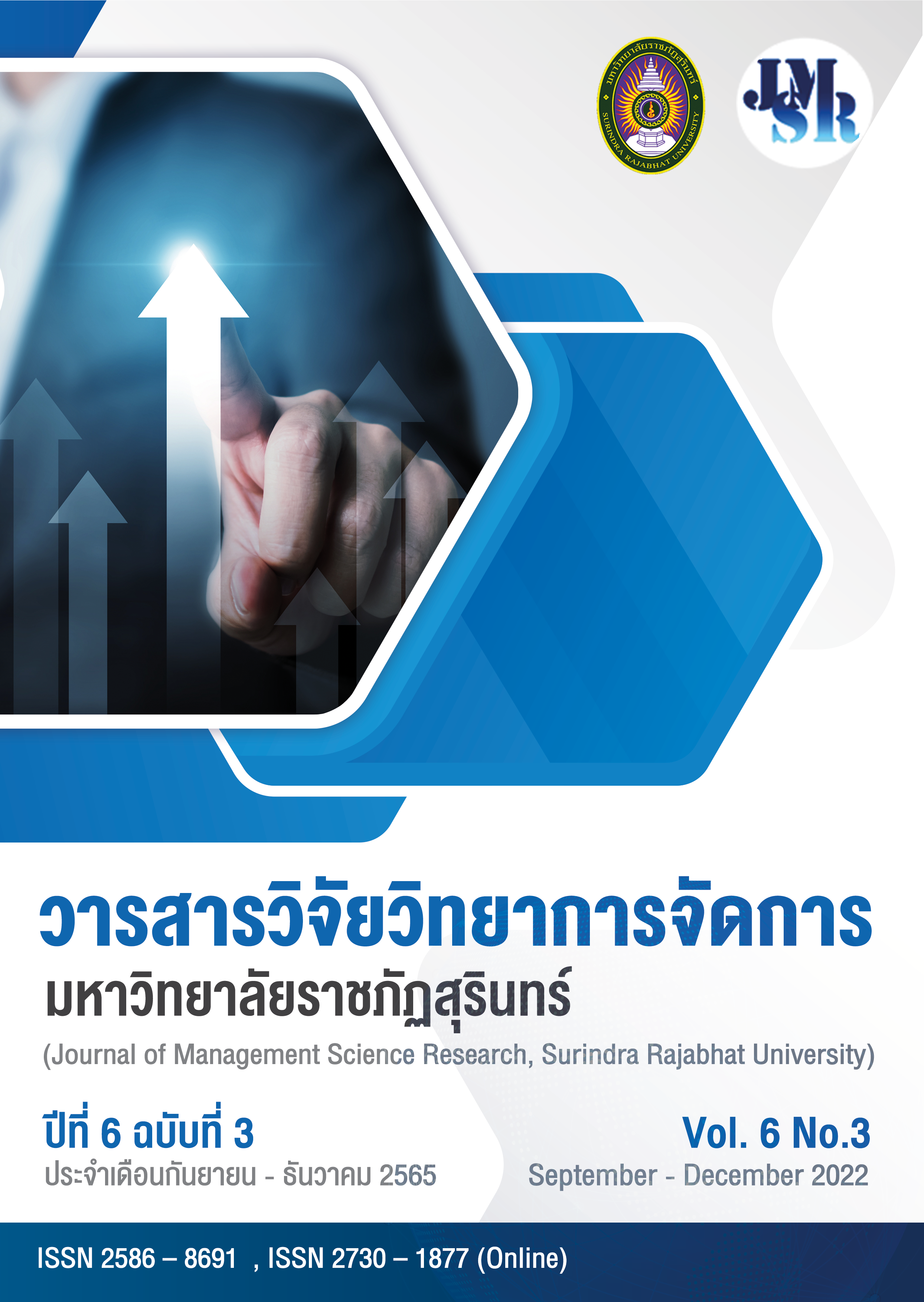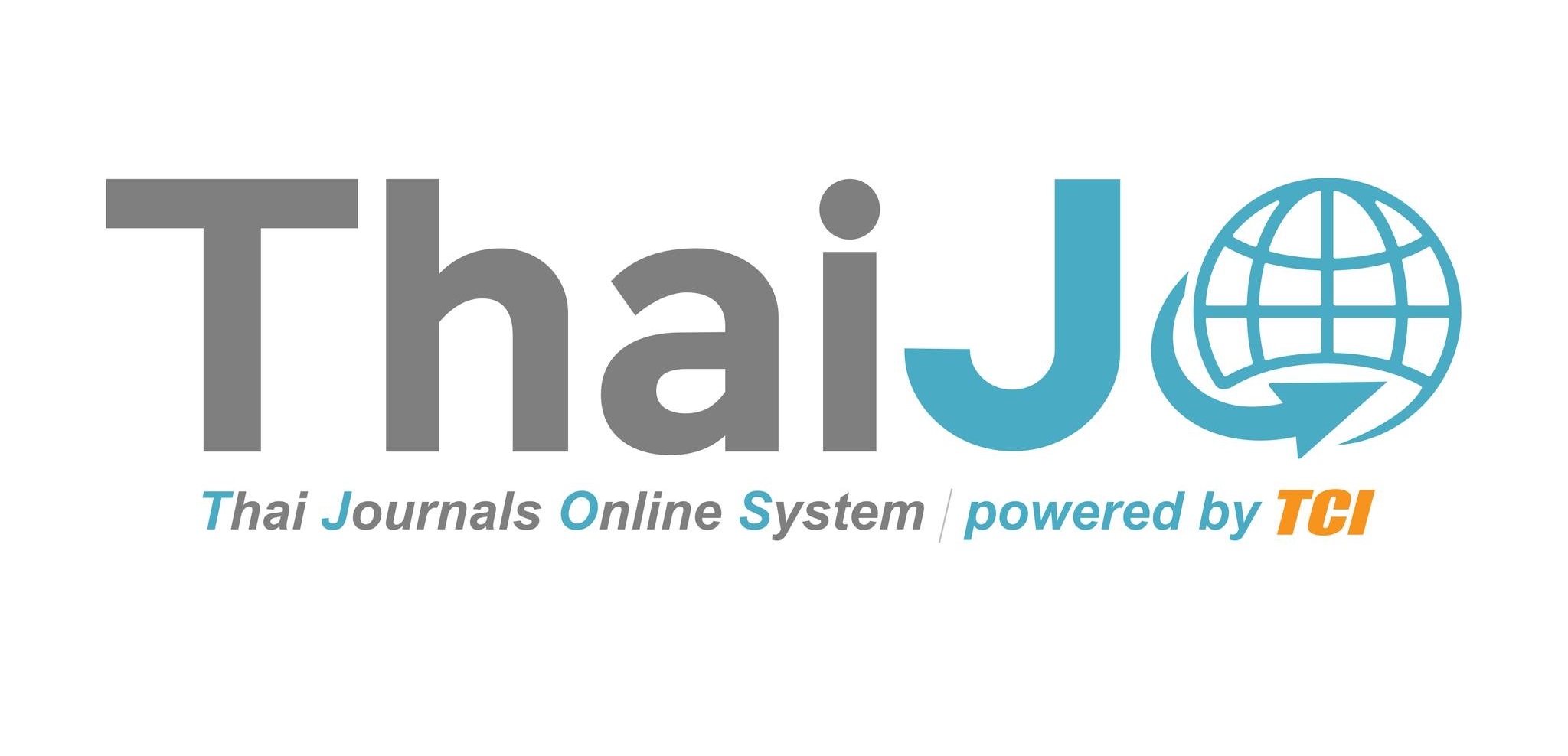An Exploratory Factor Analysis of Factors Affecting the Decision to Study Bachelor of Business Administration in Logistics and Supply Chain Management
Keywords:
Exploratory factor analysis, Factor, Exploratory Factor Analysis, Factors, Logistics and Supply Chain ManagementAbstract
This research was aimed to conduct an exploratory factor analysis of factors affecting the decision to study Bachelor of Business Administration in Logistics and Supply Chain Management. The sampling group consisted of 400 people which were Mathayomsuksa 6 (or Grade
12) students in Ayutthaya and Angthong Province and first-year to fourth-year undergraduate students who studied logistics in the academic year 2021. They were chosen using purposive sampling method. The tool in this research was questionnaire on factors affecting the decision to study Bachelor of Business Administration in Logistics and Supply Chain Management (Revised) B.E. 2564 (or AD 2021). The statistical method in this research was exploratory factor analysis (EFA) through Principal Component Analysis and Orthogonal Rotation by Varimax Method. The findings showed that there were 17 components. The Kaiser-Meyer-Olkin value was 0.848 and the Chi-Square value was 1343.039 There were 4 main components as in 1) the university’s public image, 2) education, 3) interest in Bachelor of Business Administration in Logistics and Supply Chain Management, and 4) personal reasons. The total variance was 43.123 per cent. Furthermore, the research findings involved other factors affecting the decision to study Bachelor of Business Administration in Logistics and Supply Chain Management. The department will consider the findings to revise the course to meet the demands of the students in the future.
References
ไกรสิงห์ สุดสงวน. (2560). การศึกษาปัจจัยที่มีผลต่อการตัดสินใจศึกษาต่อในระดับอุดมศึกษาของนักเรียนมัธยมศึกษาตอนปลาย โรงเรียนสาธิตมหาวิทยาลัยศิลปากร. วารสารวิชาการ Veridian E-Journal ฉบับภาษาไทย สาขามนุษยศาสตร์ สังคมศาสตร์ และศิลปะ, 10(1), 201-207.
ชุติมา ฮากิม, อัจฉรา ไชยูปถัมภ์, วัลลภา เทพหัสดิน ณ อยุธยา. (2563). การวิเคราะห์องค์ประกอบเชิงยืนยันความสามารถในการพัฒนาความสุขอย่างยั่งยืนของนักศึกษาพยาบาลทหาร-ตำรวจ. วารสารพยาบาลสภากาชาดไทย, 13(2), 224-240.
ชณิดาภา บุญประสม และ จรัญ แสนราช. (2562). การวิเคราะห์องค์ประกอบการลาออกกลางคันของนักศึกษาระดับปริญญาตรี มหาวิทยาลัยราชภัฏอุบลราชธานี. วารสารวิชาการครุศาสตร์อุตสาหกรรม พระจอมเกล้าพระนครเหนือ, 10(1), 86-97.
ธานินทร์ ศิลป์จารุ. (2563). การวิจัยและวิเคราะห์ข้อมูลทางสถิติด้วย SPSS และ AMOS. (พิมพ์ครั้งที่ 17). กรุงเทพฯ: บิสซิเนสอาร์แอนด์ดี. 570 หน้า.
สำนักงานคณะกรรมการพัฒนาการเศรษฐกิจและสังคมแห่งชาติ. (2565). แผนยุทธศาสตร์การพัฒนาระบบโลจิสติกส์ของประเทศไทย ฉบับที่ 3 (พ.ศ.2560-2564) [ออนไลน์]. ค้นเมื่อ 10 เมษายน 2565, จาก : https://www.nesdc.go.th/download/document/logistic/plan3.pdf.
สำนักงานคณะกรรมการพัฒนาการเศรษฐกิจและสังคมแห่งชาติ. (2565). (ร่าง) แผนพัฒนาเศรษฐกิจและสังคมแห่งชาติ ฉบับที่ 13 (พ.ศ.2566-2570) [ออนไลน์]. ค้นเมื่อ 10 เมษายน 2565, จาก : https://www. https://www.nesdc.go.th/download/document/Yearend/2021/plan13.pdf.
Cochran, W.G. (1963). Sampling Technique. New York: London.
Cronbach, L. J. (1990). Essentials of Psychological Test. (5th edition). New York: Harper Collins.
Likert, R. N. (1970). A technique for the measurement of attitude. Attitude Measurement. Chicago: Ronal McNally & Company.







